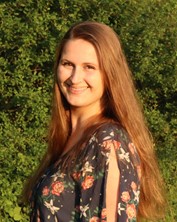Julia Becher
Research project
Exploring the artefactual record of feasting during the Orcadian Late Neolithic
Supervisor:
Oliver Craig
Martine Regert
Funding:
European Union's Horizon 2020 research and innovation programme under grant agreement ChemArch No 956351
Summary of research project:
My PhD project within the ChemArch network (ESR9) aims to investigate the function of numerous ceramics from the Ness of Brodgar UNESCO world heritage site, Orkney, Scotland, using Organic Residue Analysis (ORA). The project intends to explore the use of Neolithic ceremonial complexes by comparing pottery of large-scale communal feasting with the more day-to-day use of vessels for storage, cooking and food consumption. The extraction of lipids using GC-MS and GC-c-IRMS is a powerful tool in order to understand pottery use beyond purely typological grounds. Other find categories will be included to contextualize the ORA results on a spatial and chronological scale.
Profile
My main research topics focus on the archaeology of sub-Saharan Africa and Central Europe with an emphasis on hunter-gatherers, pastoralists, and early farmers by comparing research data on lithic technology, subsistence patterns, organic artefacts, ceramic typology, and the ethnographic record. During my studies in Tuebingen I participated in a large number of different projects, including Sibudu Cave, Umbeli Belli and Iron Pig Shelter in South Africa, Hohle Fels, Vogelherd, Schöningen in Germany, Sefunim Cave in Israel, Lobamba National Museum in eSwatini, and Mumba Cave in Tanzania.
Since 2017, I was employed at the ORA lab in Tuebingen under the direction of Dr Cynthianne Spiteri. I received extensive training in the analysis of lipids originating from archaeological and modern reference samples (GC-MS and GC-c-IRMS). Furthermore, I received training by Dr Stephen Buckley in human dental calculus analysis (TD/Py-GC-MS). Since March 2021, I was employed at the Biogeology lab, supervised by Prof. Dr Hervé Bocherens, receiving training in the study of δ15N through compound specific isotopic analysis (CSIA) of amino acids from bone collagen.
My dissertation focused on vessel use at Lydenburg Heads site, South Africa, dating to the Early Iron Age, using a combined approach of lipid biomarkers (GC-MS) and compound-specific isotope analysis (GC-c-IRMS). In addition to the microscale evidence, I conducted a detailed review of botanical and zoological data in the study area. This MA project is the first ORA study on early farming pottery in southern Africa. The project was supervised by Dr Cynthianne Spiteri (University of Tuebingen/University of Turin) and Dr Alex Schoeman (University of the Witwatersrand). Dr Gavin Whitelaw (Chief Curator, KwaZulu-Natal Museum), Dr Stephen Buckley (University of Tuebingen/University of York), and Jean-Pierre Celliers (Curator, Lydenburg Museum) were collaborative research partners.
Publications and Awards
Publications
Buckley, S., Power, R. C., Andreadaki-Vlazaki, M., Akar, M., Becher, J., Belser, M., Cafisso, S., Eisenmann, S., Fletcher, J., Francken, M., Hallager, B., Harvati, K., Ingman, T., Kataki, E., Maran, J., Martin, M. A. S., McGeorge, P. J. P., Milevski, I., Papadimitriou, A., Protopapadaki, E., Salazar-García, D. C., Schmidt-Schultz, T., Schuenemann, V. J., Shafiq, R., Stuijts, I., Yegorov, D., Yener, K. A., Schultz, M., Spiteri, C., Stockhammer, P. W., 2021. Archaeometric evidence for the earliest exploitation of lignite from the bronze age Eastern Mediterranean. Scientific Reports, 11, 24185. https://doi.org/10.1038/s41598-021-03544-w
Becher, J., 2019. Sipplingen (Lkr. Bodenseekreis). Eine Pfahlbaustation mit jahrzehntelanger Forschungsgeschichte. In: Plattform, Jahrbuch 25-27, 2016-18: 72-74.
Conference presentations
Becher, J., Spiteri, C., Schoeman, A., Whitelaw, G., Celliers, J.-P., 2021. A closer look at the pots. Investigating the overall cuisine of the Urewe and Kalundu occupation facies of Lydenburg Heads, South Africa, using GC/MS and GC-c-IRMS. SAfA 2021 - 25th Biennial Meeting: ‚African Archaeology – A 20:20 Vision for the Future’, oral presentation.
Becher, J., Schoeman, A., Buckley, S., Whitelaw, G., Celliers, J.-P., Spiteri, C., 2021. Secondary animal products in African societies. A case study from the Early Iron Age site of Lydenburg Heads, South Africa. EAA 2021, oral presentation.
Becher, J., Schoeman, A., Whitelaw, G., Celliers, J.-P., Buckley, S., Spiteri, C., 2021. Integrating lipid residue analysis into the faunal and botanical record of the Early Iron Age in South Africa. A pilot study conducted at Lydenburg Heads site using GC/MS and GC-c-IRMS. International and Interdisciplinary Conference on African Precolonial History: ‘Extracting the past from the present’, oral presentation.
Teaching and Impact
18.11.2021 Invited speaker, Tübinger Verein zur Förderung der Ur- und Frühgeschichtlichen Archäologie e.V. (TÜVA) lecture series. ‘Rethinking the Early Iron Age of southern Africa: from old pots to new perspectives.’
11.2021 Guest speaker in module ‘Biomolecular Archaeology’ by Dr Jennifer Harland, University of the Highlands and Islands. ‘A closer look at the pots. The application of biomolecular methods to archaeological material.’
10.2019 Invited speaker, Archaeology Lunchtime Seminar, University of the Witwatersrand. ‘Absence of evidence is not evidence of absence: Tracing hidden information using organic residue analysis’.

